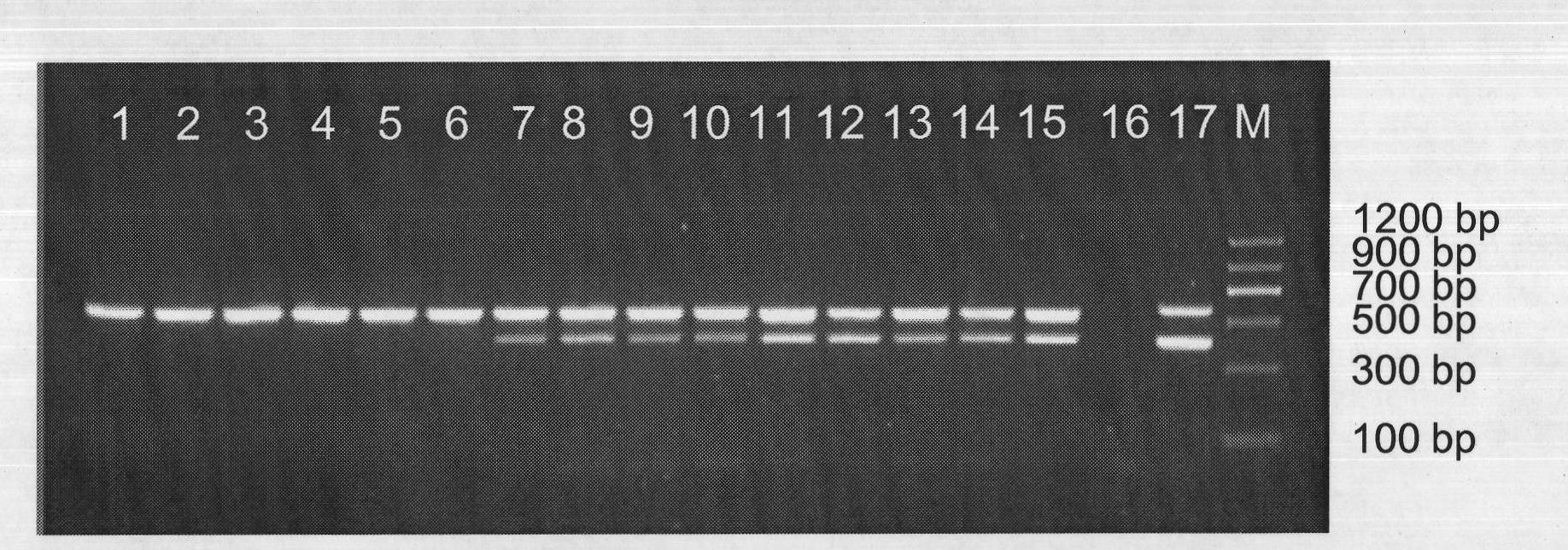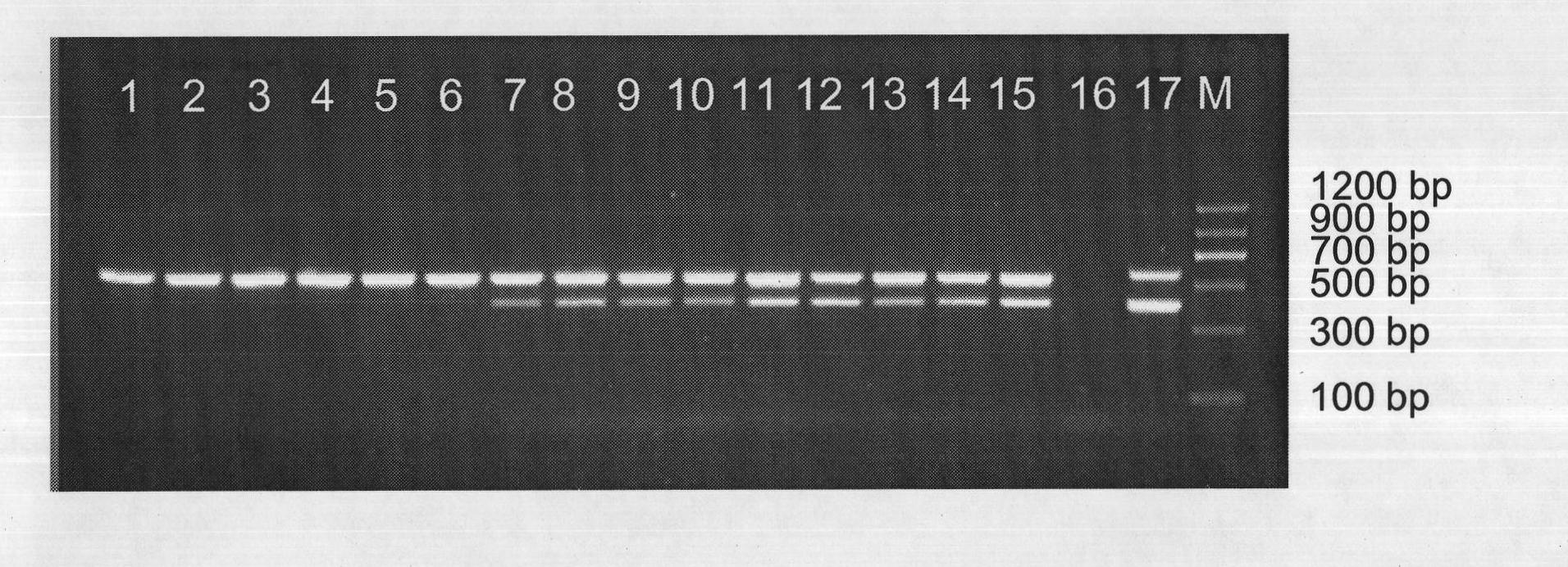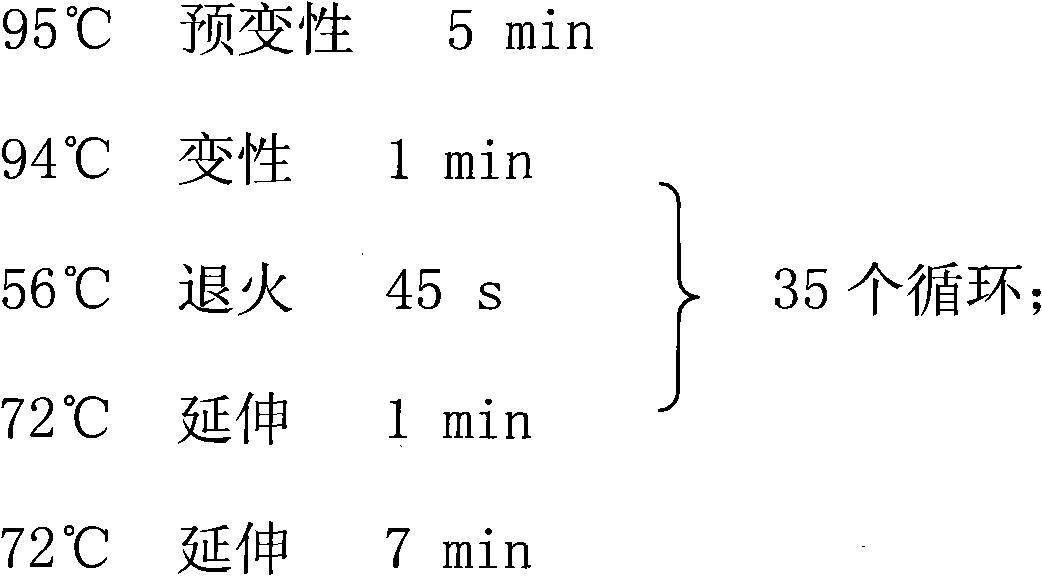Kit and method for detecting angiostrongylus cantonensis in pomacea canaliculata
A technology of Angiostrongylus and apple snails, which is applied in the field of bioengineering, can solve problems such as false negatives and PCR reaction failures, and achieve the effects of strong specificity, good repeatability, and avoiding false negatives
- Summary
- Abstract
- Description
- Claims
- Application Information
AI Technical Summary
Problems solved by technology
Method used
Image
Examples
Embodiment 1
[0049] Example 1 Carrying out DNA extraction of apple snails with small tubes using a kit
[0050] 1) After pulverizing the lung sac tissue of apple snails, take about 50 mg, add 600 μl solution A (CTAB lysate (2% CTAB, 20mmol / L EDTA, 0.1mol / L Tris-Cl, 1.4mol / LNaCl)), 9μl B solution (mercaptoethanol), 6 μl solution C (proteinase K (20mg / mL)), digest overnight at 60°C;
[0051] 2) Add 600 μl D solution (phenol: chloroform: isoamyl alcohol (25:24:1)), mix thoroughly, and centrifuge at 10,000 rpm for 10 min;
[0052] 3) Take the supernatant, add an equal volume of solution D, mix well, and centrifuge at 10,000rpm for 10min;
[0053] 4) repeat step 3) step;
[0054] 5) Take the supernatant, add 2 times the volume of absolute ethanol, and centrifuge at 11,000rpm for 10min;
[0055] 6) Discard the supernatant, take the precipitate, add 500 μl of 75% ethanol to wash, and centrifuge at 11,000 rpm for 5 min;
[0056] 7) Discard the supernatant, precipitate naturally or dry in an ov...
Embodiment 2
[0058] Embodiment 2 adopts kit to carry out the detection of existing DNA sample
[0059] 1) Preparation of PCR reaction system: 5.9 μl of double steamed sterilized water, 7.5 μl of solution F (2×Master PCRMix), 0.6 μl of solution G (10 μmol / L primer, containing primer 1 and primer 2), Step 8 of Example 1 1μl of the existing DNA sample obtained after the completion of ), thoroughly mixed and briefly centrifuged at 500rpm for 5s;
[0060] 2) The PCR reaction system is as follows:
[0061]
[0062] 3) Take 6 μl of the PCR product and perform 1.5% agarose gel electrophoresis, observe the bands, and judge the infection of apple snails.
Embodiment 3
[0063] Example 3 Using a kit to extract and detect DNA from apple snails
[0064] 1) After pulverizing the lung sac tissue of apple snails, take about 100mg, add 700μl solution A (CTAB lysate (2% CTAB, 20mmol / L EDTA, 0.1mol / L Tris-Cl, 1.4mol / LNaCl)), 10μl B solution (mercaptoethanol), 7 μl solution C (proteinase K (20mg / mL)), digest overnight at 60°C;
[0065] 2) Add 700 μl D solution (phenol: chloroform: isoamyl alcohol (25:24:1)), mix thoroughly, and centrifuge at 16,000 rpm for 10 min;
[0066] 3) Take the supernatant, add an equal volume of solution D, mix well, and centrifuge at 16,000rpm for 10min;
[0067] 4) repeat step 3) step;
[0068] 5) Take the supernatant, add 3 times the volume of absolute ethanol, and centrifuge at 13,000rpm for 10min;
[0069] 6) Discard the supernatant, take the precipitate, add 500 μl of 75% ethanol to wash, and centrifuge at 13,000 rpm for 5 min;
[0070] 7) Discard the supernatant, precipitate naturally or dry in an oven;
[0071] 8) ...
PUM
| Property | Measurement | Unit |
|---|---|---|
| Sensitivity | aaaaa | aaaaa |
Abstract
Description
Claims
Application Information
 Login to View More
Login to View More - R&D
- Intellectual Property
- Life Sciences
- Materials
- Tech Scout
- Unparalleled Data Quality
- Higher Quality Content
- 60% Fewer Hallucinations
Browse by: Latest US Patents, China's latest patents, Technical Efficacy Thesaurus, Application Domain, Technology Topic, Popular Technical Reports.
© 2025 PatSnap. All rights reserved.Legal|Privacy policy|Modern Slavery Act Transparency Statement|Sitemap|About US| Contact US: help@patsnap.com



